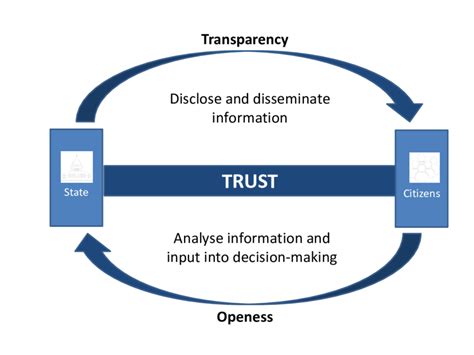
A busy emergency room doctor shed nearly half his body fat in three months by incorporating simple lifestyle changes focused on diet and exercise. Dr. Sean Hashmi, a physician with Kaiser Permanente, transformed his health by prioritizing sleep, adopting a whole-food, plant-based diet, and engaging in regular physical activity, ultimately losing a significant amount of weight and improving his overall well-being.
Doctor’s Simple Tweaks Lead to Dramatic Fat Loss
Dr. Sean Hashmi, an emergency room physician juggling a demanding career and family life, has demonstrated that significant health transformations are possible with consistent effort and strategic lifestyle modifications. Faced with his own health challenges, Hashmi embarked on a journey that resulted in a dramatic reduction of body fat – almost half – in just three months. His approach involved prioritizing sleep, transitioning to a whole-food, plant-based diet, and incorporating regular exercise into his daily routine.
Hashmi’s story is particularly compelling because it highlights the feasibility of making impactful changes even within the constraints of a busy professional life. He emphasized that his transformation wasn’t about extreme measures or unsustainable practices, but rather about making conscious choices that gradually improved his health.
“It’s not about being perfect, it’s about progress,” Hashmi stated. He stressed the importance of focusing on sustainable habits rather than quick fixes, a principle that resonates with individuals seeking long-term health improvements. His experience offers a practical roadmap for others looking to enhance their well-being without sacrificing their careers or personal lives.
The Three Pillars of Transformation: Sleep, Diet, and Exercise
Hashmi’s success can be attributed to his holistic approach, which focused on three key pillars: sleep, diet, and exercise. Each of these elements played a crucial role in his overall transformation, contributing to his significant fat loss and improved health markers.
-
Prioritizing Sleep: In the face of demanding work schedules and the constant pressures of modern life, sleep often becomes a neglected aspect of health. Hashmi recognized the critical role of sleep in regulating metabolism, hormone balance, and overall energy levels. He made a conscious effort to prioritize sleep, aiming for at least seven to eight hours of quality sleep each night.
“Sleep is not a luxury; it’s a necessity,” Hashmi emphasized. He noted that adequate sleep helps regulate hormones like cortisol, which can contribute to weight gain and insulin resistance when elevated due to sleep deprivation. By prioritizing sleep, Hashmi was able to optimize his body’s natural processes, making it easier to lose weight and maintain a healthy metabolism. Strategies he used included establishing a consistent sleep schedule, creating a relaxing bedtime routine, and optimizing his sleep environment for darkness, quiet, and coolness.
-
Adopting a Whole-Food, Plant-Based Diet: Hashmi’s dietary transformation involved transitioning to a whole-food, plant-based diet. This approach emphasizes unprocessed, plant-derived foods such as fruits, vegetables, whole grains, legumes, and nuts. It minimizes or eliminates animal products, processed foods, refined sugars, and unhealthy fats.
“Food is medicine,” Hashmi stated, underscoring the profound impact of diet on health. A whole-food, plant-based diet is rich in fiber, vitamins, minerals, and antioxidants, all of which contribute to weight management, reduced inflammation, and improved overall health. Fiber helps promote satiety, preventing overeating and aiding in weight loss. The abundance of nutrients supports optimal bodily functions and reduces the risk of chronic diseases. Hashmi focused on preparing meals at home, using fresh, seasonal ingredients, and avoiding processed foods and sugary drinks. He also incorporated mindful eating practices, paying attention to his hunger and fullness cues to avoid overconsumption.
-
Incorporating Regular Exercise: Physical activity is an essential component of any health transformation. Hashmi integrated regular exercise into his daily routine, combining both cardiovascular exercise and strength training. Cardiovascular exercise, such as running, swimming, or cycling, helps burn calories and improve cardiovascular health. Strength training builds muscle mass, which increases metabolism and helps the body burn more calories even at rest.
Hashmi emphasized that exercise doesn’t have to be time-consuming or complicated. He incorporated short bursts of high-intensity interval training (HIIT) into his routine, along with longer, moderate-intensity workouts. He also found ways to incorporate physical activity into his daily life, such as taking the stairs instead of the elevator or walking during his lunch break. “Consistency is key,” Hashmi noted, stressing the importance of finding activities that you enjoy and can realistically incorporate into your lifestyle.
The Science Behind the Transformation
Hashmi’s dramatic fat loss can be explained by the underlying science of metabolism, nutrition, and exercise physiology. By prioritizing sleep, adopting a whole-food, plant-based diet, and engaging in regular physical activity, he created a synergistic effect that optimized his body’s ability to burn fat and build muscle.
-
Metabolic Regulation: Adequate sleep and a healthy diet play a crucial role in regulating metabolism. Sleep deprivation can disrupt hormone balance, leading to increased levels of cortisol and decreased levels of leptin, the hormone that signals fullness. This can result in increased appetite, cravings for unhealthy foods, and decreased metabolism. A whole-food, plant-based diet, rich in fiber and nutrients, helps stabilize blood sugar levels, improve insulin sensitivity, and promote a healthy metabolism.
-
Nutrient Density and Satiety: Whole, plant-based foods are nutrient-dense, meaning they provide a high amount of nutrients relative to their calorie content. They are also rich in fiber, which promotes satiety and helps prevent overeating. This combination of nutrient density and satiety makes it easier to control calorie intake and lose weight. Furthermore, plant-based diets tend to be lower in saturated and trans fats, which can contribute to weight gain and increase the risk of heart disease.
-
Muscle Building and Calorie Burning: Strength training helps build muscle mass, which is metabolically active tissue. Muscle tissue burns more calories at rest than fat tissue, so building muscle can increase your resting metabolic rate and help you burn more calories throughout the day. Cardiovascular exercise burns calories during the activity and can also increase your metabolic rate for a period of time afterward.
Practical Tips for Replicating Hashmi’s Success
While Hashmi’s transformation is inspiring, it’s important to recognize that everyone’s journey is unique. However, there are several practical tips that individuals can implement to replicate his success and improve their own health.
-
Start Small and Be Consistent: Don’t try to overhaul your entire lifestyle overnight. Instead, focus on making small, sustainable changes that you can consistently maintain. For example, start by adding one extra serving of vegetables to your daily diet or taking a 15-minute walk during your lunch break.
-
Plan Your Meals: Meal planning is essential for maintaining a healthy diet, especially when you have a busy schedule. Take some time each week to plan your meals and snacks, and make a grocery list based on your meal plan. This will help you avoid impulse purchases of unhealthy foods and ensure that you have healthy options readily available.
-
Find an Exercise Buddy: Exercising with a friend or family member can provide motivation and accountability. Schedule regular workouts together and support each other in achieving your fitness goals.
-
Prioritize Sleep Hygiene: Create a relaxing bedtime routine to help you wind down before sleep. Avoid screens for at least an hour before bed, and create a dark, quiet, and cool sleep environment.
-
Seek Professional Guidance: If you’re struggling to make changes on your own, consider seeking guidance from a registered dietitian, certified personal trainer, or other healthcare professional. They can provide personalized advice and support to help you achieve your health goals.
The Importance of a Holistic Approach
Hashmi’s transformation underscores the importance of a holistic approach to health. It’s not just about diet or exercise; it’s about addressing all aspects of your well-being, including sleep, stress management, and social connections. When you prioritize all of these elements, you create a synergistic effect that can lead to significant improvements in your overall health and quality of life.
Beyond Weight Loss: The Broader Health Benefits
While Hashmi’s dramatic fat loss is undoubtedly impressive, it’s important to recognize the broader health benefits of his lifestyle changes. A whole-food, plant-based diet and regular exercise can reduce the risk of chronic diseases such as heart disease, type 2 diabetes, and certain types of cancer. They can also improve mental health, boost energy levels, and enhance overall quality of life.
The Challenge of Maintaining the Transformation
Maintaining a healthy lifestyle is an ongoing process. It requires consistent effort and a commitment to making healthy choices on a daily basis. Hashmi acknowledges that there will be challenges along the way, but he emphasizes the importance of staying focused on your goals and celebrating your successes. He continues to prioritize sleep, maintain a whole-food, plant-based diet, and engage in regular exercise, even when faced with the demands of his busy career and family life.
The Ripple Effect: Inspiring Others
Hashmi’s story is not just about his personal transformation; it’s also about the ripple effect he’s creating by inspiring others to improve their health. By sharing his experiences and insights, he’s empowering individuals to take control of their well-being and make positive changes in their own lives. His journey serves as a powerful reminder that significant health transformations are possible with consistent effort, strategic planning, and a commitment to a holistic approach.
Conclusion: A Testament to the Power of Lifestyle Changes
Dr. Sean Hashmi’s story is a testament to the transformative power of lifestyle changes. By prioritizing sleep, adopting a whole-food, plant-based diet, and incorporating regular exercise into his daily routine, he was able to achieve dramatic fat loss and improve his overall health. His journey offers a practical roadmap for others looking to enhance their well-being without sacrificing their careers or personal lives. His experience underscores the importance of a holistic approach to health, one that addresses all aspects of well-being, including sleep, diet, exercise, stress management, and social connections. By making consistent, sustainable changes, individuals can achieve significant improvements in their health and quality of life.
Frequently Asked Questions (FAQs)
-
What specific diet did Dr. Hashmi follow to lose the weight?
Dr. Hashmi adopted a whole-food, plant-based diet. This involves primarily consuming unprocessed, plant-derived foods such as fruits, vegetables, whole grains, legumes, and nuts. He minimized or eliminated animal products, processed foods, refined sugars, and unhealthy fats. The focus was on nutrient-dense foods that promote satiety and support overall health. He focused on preparing meals at home, using fresh, seasonal ingredients, and avoiding processed foods and sugary drinks.
-
How much exercise did Dr. Hashmi incorporate into his routine?
Dr. Hashmi integrated regular exercise into his daily routine, combining both cardiovascular exercise and strength training. He incorporated short bursts of high-intensity interval training (HIIT) into his routine, along with longer, moderate-intensity workouts. He also found ways to incorporate physical activity into his daily life, such as taking the stairs instead of the elevator or walking during his lunch break. The key was consistency and finding activities that he enjoyed and could realistically incorporate into his lifestyle.
-
How did Dr. Hashmi manage to prioritize sleep with his busy schedule as an emergency room doctor?
Dr. Hashmi made a conscious effort to prioritize sleep by implementing several strategies. These included establishing a consistent sleep schedule, even on weekends, to regulate his body’s natural sleep-wake cycle. He created a relaxing bedtime routine to help him wind down before sleep, such as taking a warm bath or reading a book. He also optimized his sleep environment for darkness, quiet, and coolness. Recognizing the importance of sleep hygiene, he avoided screens for at least an hour before bed and minimized caffeine intake in the evening.
-
What was the biggest challenge Dr. Hashmi faced during his transformation, and how did he overcome it?
While the original article doesn’t specify ONE biggest challenge, it can be inferred that consistently adhering to the new lifestyle changes given his demanding work schedule was a challenge. The article stresses the importance of planning meals, starting small, and being consistent. Therefore, a significant challenge was likely time management and planning. He overcame it by making small, sustainable changes, planning meals in advance, and finding ways to incorporate exercise into his busy day. The mindset of focusing on progress over perfection was also crucial.
-
What advice does Dr. Hashmi have for others who want to lose weight and improve their health?
Dr. Hashmi emphasizes the importance of a holistic approach to health, focusing on sleep, diet, and exercise. He advises starting small, being consistent, and finding activities that you enjoy and can realistically incorporate into your lifestyle. He also stresses the importance of prioritizing sleep hygiene, planning meals, and seeking professional guidance if needed. Ultimately, he encourages individuals to focus on progress rather than perfection and to make sustainable changes that will improve their health and quality of life. He states, “It’s not about being perfect, it’s about progress,”.
Expanded Context and In-Depth Analysis
Dr. Hashmi’s transformative journey presents a valuable case study in lifestyle medicine, a field that emphasizes the use of evidence-based lifestyle therapeutic approaches, such as a predominantly whole food, plant-based diet, regular physical activity, adequate sleep, stress management, avoidance of risky substances, and positive social connections, as a primary modality, delivered by clinicians trained to apply these approaches both preventively and, where appropriate, therapeutically, for the treatment of chronic disease. His success highlights the limitations of relying solely on pharmaceutical interventions for chronic disease management and underscores the potential of lifestyle modifications to achieve significant health improvements.
The modern healthcare system often prioritizes treating symptoms with medication rather than addressing the underlying causes of disease through lifestyle changes. This approach can be effective in managing acute conditions, but it often falls short in addressing the root causes of chronic diseases such as obesity, type 2 diabetes, heart disease, and certain types of cancer. These conditions are often driven by unhealthy lifestyle factors, such as poor diet, lack of physical activity, chronic stress, and inadequate sleep.
Dr. Hashmi’s experience demonstrates that it is possible to reverse or prevent these diseases through lifestyle interventions. His adoption of a whole-food, plant-based diet, regular exercise, and prioritization of sleep are all evidence-based strategies for improving metabolic health, reducing inflammation, and promoting overall well-being.
The scientific literature supports the efficacy of these lifestyle interventions in preventing and treating chronic diseases. Studies have shown that a whole-food, plant-based diet can lower cholesterol levels, improve blood sugar control, reduce blood pressure, and promote weight loss. Regular exercise can improve cardiovascular health, build muscle mass, and boost mood. Adequate sleep can regulate hormone balance, improve cognitive function, and reduce stress.
Furthermore, Dr. Hashmi’s story challenges the common misconception that healthy lifestyle changes are too difficult or time-consuming to implement. He demonstrated that it is possible to make significant improvements in health even within the constraints of a busy professional life. His approach involved making small, sustainable changes that gradually improved his health over time. He prioritized meal planning, incorporated exercise into his daily routine, and made a conscious effort to prioritize sleep.
His success also underscores the importance of self-compassion and a focus on progress rather than perfection. It’s unrealistic to expect to make drastic changes overnight. Instead, it’s important to focus on making small, sustainable changes that you can consistently maintain. There will be setbacks along the way, but it’s important to learn from these experiences and continue moving forward.
The ripple effect of Dr. Hashmi’s transformation is also significant. By sharing his experiences and insights, he’s inspiring others to take control of their health and make positive changes in their own lives. His journey serves as a powerful reminder that significant health transformations are possible with consistent effort, strategic planning, and a commitment to a holistic approach.
The Broader Implications for Healthcare
Dr. Hashmi’s story has broader implications for the healthcare system. It suggests that healthcare providers should prioritize lifestyle medicine approaches in the prevention and treatment of chronic diseases. This requires educating patients about the importance of healthy lifestyle choices and providing them with the tools and resources they need to make positive changes.
It also requires training healthcare providers in lifestyle medicine principles and equipping them with the skills to effectively counsel patients on diet, exercise, sleep, and stress management. Many healthcare providers currently lack the training and knowledge to provide comprehensive lifestyle counseling, but this can be addressed through continuing education programs and the integration of lifestyle medicine into medical school curricula.
Furthermore, healthcare systems should create environments that support healthy lifestyle choices. This includes providing access to healthy food options in hospitals and clinics, promoting physical activity through workplace wellness programs, and offering resources for stress management and mental health.
By prioritizing lifestyle medicine, the healthcare system can shift its focus from treating symptoms to preventing and reversing chronic diseases. This will not only improve the health and well-being of individuals but also reduce healthcare costs and improve the overall efficiency of the system.
The Role of Technology in Supporting Lifestyle Changes
Technology can play a significant role in supporting lifestyle changes. Mobile apps and wearable devices can track activity levels, monitor sleep patterns, and provide personalized feedback and motivation. Online resources can provide access to evidence-based information on diet, exercise, and stress management. Telehealth platforms can connect patients with healthcare providers for remote counseling and support.
These technologies can empower individuals to take control of their health and make informed decisions about their lifestyle choices. They can also help healthcare providers monitor patient progress and provide personalized interventions.
However, it’s important to use technology in a mindful and responsible way. Overreliance on technology can lead to burnout and disengagement. It’s important to find a balance between technology and human interaction and to use technology as a tool to support, not replace, healthy lifestyle choices.
The Importance of Social Support
Social support is a critical factor in successful lifestyle changes. Having a supportive network of friends, family, or colleagues can provide encouragement, accountability, and motivation. Joining a support group or working with a health coach can also be beneficial.
Social support can help individuals overcome challenges, stay on track with their goals, and celebrate their successes. It can also provide a sense of community and belonging, which can be particularly important for individuals who are making significant lifestyle changes.
The Long-Term Sustainability of Lifestyle Changes
The ultimate goal of lifestyle changes is to create sustainable habits that can be maintained over the long term. This requires a commitment to making healthy choices on a daily basis and developing strategies for coping with challenges and setbacks.
It’s important to recognize that there will be times when it’s difficult to stick to your healthy lifestyle plan. This is normal and to be expected. The key is to not give up and to get back on track as soon as possible.
Developing coping mechanisms for dealing with stress, managing cravings, and navigating social situations can help individuals maintain their healthy lifestyle habits over the long term. It’s also important to celebrate successes and reward yourself for achieving your goals.
By focusing on long-term sustainability, individuals can transform their health and improve their quality of life for years to come.
Ethical Considerations
While promoting lifestyle changes is generally beneficial, it’s important to consider potential ethical implications. Emphasizing personal responsibility for health can inadvertently lead to blaming individuals for their health conditions, particularly those from disadvantaged backgrounds who may face significant barriers to healthy living. It’s crucial to address the social determinants of health, such as poverty, lack of access to healthy food, and unsafe environments, to create a level playing field for everyone to achieve optimal health.
Additionally, promoting specific dietary or exercise regimes should be done cautiously, ensuring that the advice is evidence-based and tailored to individual needs and preferences. Overly restrictive or fad diets can be harmful and unsustainable, and pushing people to engage in excessive exercise can lead to injuries and burnout.
Finally, it’s essential to respect individuals’ autonomy and choices regarding their health. While healthcare providers should encourage healthy lifestyle behaviors, they should avoid coercion or pressure and respect patients’ decisions, even if they differ from medical recommendations.
The Future of Lifestyle Medicine
Lifestyle medicine is a rapidly growing field with the potential to transform healthcare. As research continues to demonstrate the efficacy of lifestyle interventions in preventing and treating chronic diseases, more healthcare providers and systems are embracing this approach.
The future of lifestyle medicine is likely to involve greater integration of lifestyle interventions into primary care, increased use of technology to support lifestyle changes, and a greater focus on addressing the social determinants of health. It will also require interdisciplinary collaboration among healthcare providers, public health professionals, and community organizations to create environments that support healthy living for all.
Dr. Hashmi’s story serves as an inspiration for the future of lifestyle medicine, demonstrating the power of lifestyle changes to transform health and improve the lives of individuals and communities. His journey highlights the potential of a holistic approach to healthcare that addresses the underlying causes of disease and empowers individuals to take control of their well-being. By embracing lifestyle medicine, we can create a healthier and more equitable future for all.









